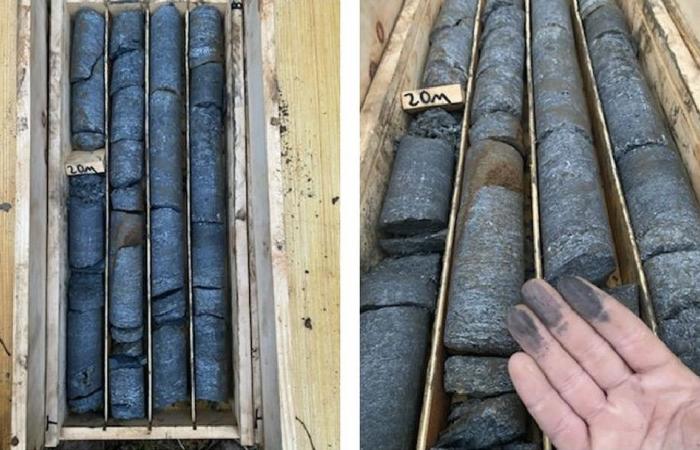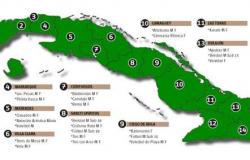South Star Battery Metals Corp. announced successful results from the ongoing metallurgical process development for the Bama Star graphite project, located in Alabama, USA.
The testing program is designed to support the upcoming National Instrument (“NI”) 43-101 Preliminary Economic Assessment (“PEA”) study, scheduled for completion in August 2024. For this purpose, subsamples of rust, transition , and fresh bulk samples were sent to SGS Lakefield in Canada for scope level metallurgical testing.
The oxide sample represents the near-surface material and the fresh sample represents the mineral from deep within the deposit that has not been exposed to any erosion. The transition sample represents the intermediate zone between the oxide and fresh horizons. SGS’s scope of work included crushing and flotation tests.
The three composites were subjected to Bond abrasion testing, Bond rod mill grinding, Bond ball mill grinding, and SMC testing. The oxide sample produced the lowest abrasivity and grinding energy requirements and both abrasivity and grinding energy requirements gradually increased with increasing depth. Generally, grinding energy requirements are considered low to medium compared to other graphite projects, which will help minimize the energy requirements of the operation.
Flotation tests
Flotation tests were performed to determine the flow sheet and conditions to produce a concentrate with a grade of at least 94% C
Flotation conditions and reagent doses were adjusted according to observations made during the tests.
The highest concentrate grade of 99.5% C(g) was achieved for the oxide sample and the grades gradually decreased with deposit depth to 94.4% C(g) for the fresh sample. All three ore types achieved the minimum planned grade of 94% C(g).
Open-circuit graphite recoveries were high, ranging between 87.5% and 91.5%. During closed-loop operation, additional graphite is expected to be recovered in the final concentrate, since graphite in the intermediate streams is not rejected as tailings.
Graphite concentrate
The graphite concentrate of the three mineral types was subjected to size fraction analysis to determine the mass distribution in different size fractions and the corresponding total carbon grades. Between 17.9% and 24.4% of the concentrate mass was reported to be the plus 150 micron size fraction and the remainder to the minus 150 micron product. Total carbon grades were consistent for most size fractions and decreased for fines less than 45 microns. This grade profile is commonly observed in graphite projects, as the smallest size fraction is the most difficult to release during rectification and frequently contains entrained gangue minerals.
It should be noted that the flowchart and conditions were not optimized, but rather the tests were developed using a flowchart and conditions that have proven successful in similar projects. In the next phase of testing, a systematic process development program will be carried out to optimize the flowsheet and reagent regimen. The objective of the process development program will be to maximize concentrate grade and recovery while minimizing circuit capital and operating costs.
Given the superior response of the oxide and transition material, the next phase of work will optimize the mine pit design to maximize the processing of the oxide and transition material in the early stages of the project life and postpone the extraction of fresh ore . This approach will allow for a phased approach to capital expenditure, as grinding energy requirements for primary and crushing applications are much lower for near-surface ore types.
“These are excellent results that confirm the excellent nature of the graphite resource in BamaStar and the ease with which it can be transformed into high-quality concentrates. Low abrasion and energy requirements will help reduce our CAPEX/ OPEX. “These are initial results suitable for the next PEA, and the flowchart is not yet optimized,” he said. Richard Pearce, CEO of South Star.
The next feasibility study work will aim to optimize the flowchart and improve these results.
Once optimized, they hope to improve these metrics (88% recovery with 99.5% Cg). This could potentially open up a wide range of value-added markets for the Company without having to significantly purify and improve its development.
“Our team continues to focus on executing our strategic plan to create near-term production with scalable, high-quality, low-cost assets in Tier 1 jurisdictions. Santa Cruz is planned to begin commercial production in the third quarter of 2024, and BamaStar “It is an important next step for our development.”he concluded.






